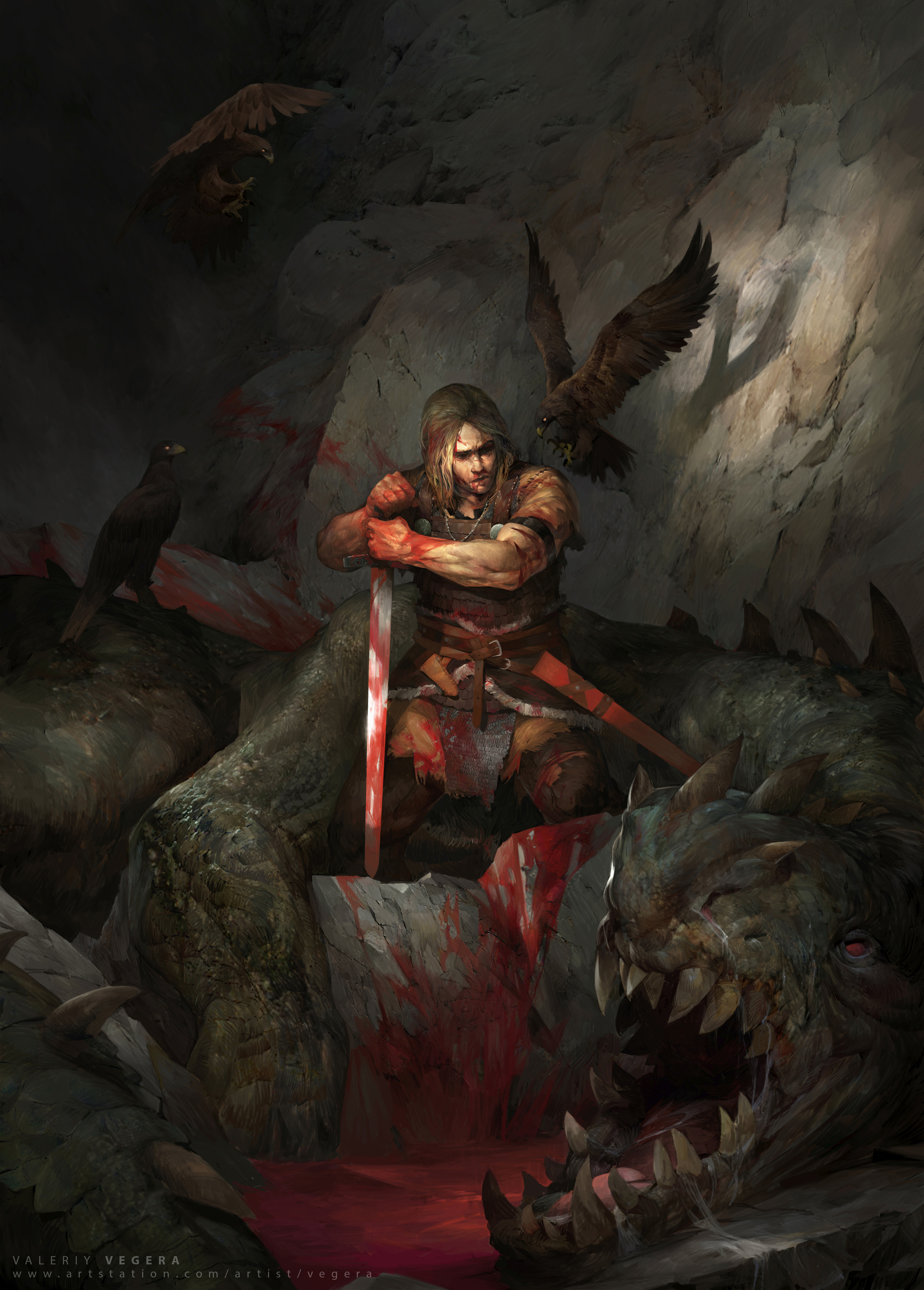
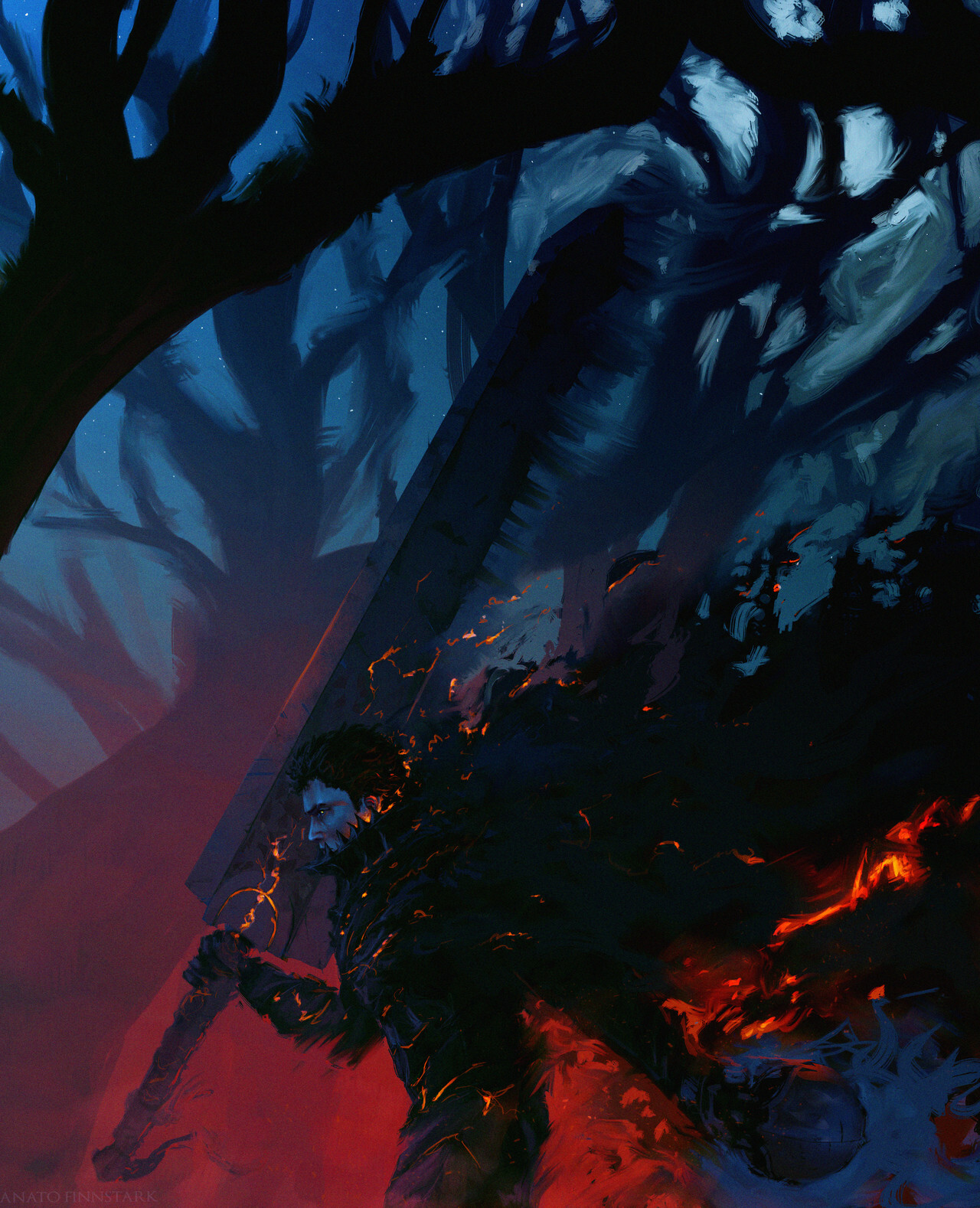

Path of Cinder
The crackling of firelight was the first sound you heard when you were born, and it has accompanied through your life, burrowed deep inside your heart. There will come a time when that fire will roar.
Flamed Blade
At 3rd level, when you enter your rage, your weapon is wreathed in flames and you emit bright light in a radius of 10 feet and dim light for an additional 10 feet. The first successful attack you make on each of your turns deals an extra 1d8 fire damage. Each creature of your choice within 5 feet of the target also takes half as much damage, as the plumes of fire extend outwards from the target.
At 14th level, the bright and dim ligth's radius increases by an additional 10 feet and the bonus to damage increases to 2d8.
Cinder Soul
At 6th level, you gain resistance to fire damage. Moreover, as an action, you can touch a flammable object that isn't being worn or carried by anyone else and set it on fire.
Additionally, when an allied creature within 30 feet of you takes fire damage, you can use your reaction to halve the damage it takes if you are raging. You gain temporary hit points equal to twice your proficiency bonus as you draw the flames toward you and absorb them.
Firesight
At 10th level, you can close your eyes in meditation and seek the flame. After 1 minute, you are able to see through any fire you have viewed or felt before if it is on the same plane as you. The effect lasts for as long as you concentrate on it (as if concentrating on a spell). For the duration, you are blind to your own senses. While the effect lasts you can freely change the fire through which you are seeing. The fire can be any size, but for it to be considered the same fire you perceived before, it must have continued burning since you last saw or felt it.
Cinder Body
At 14th level, each creature of your choice that starts its turn within 10 feet of you while you're raging takes fire damage equal to your proficiency bonus. Each time you are reduced to 0 hit points during your rage, you can deal the same damage. You can do so even when you successfully use your Relentless Rage.
Also, fire damage you deal with your attacks ignores resistance to fire damage. The radius of the bright and dim light you emit when you enter your rage increases by 10 feet, and the fire damage of your Flamed Blade increases to 2d8.
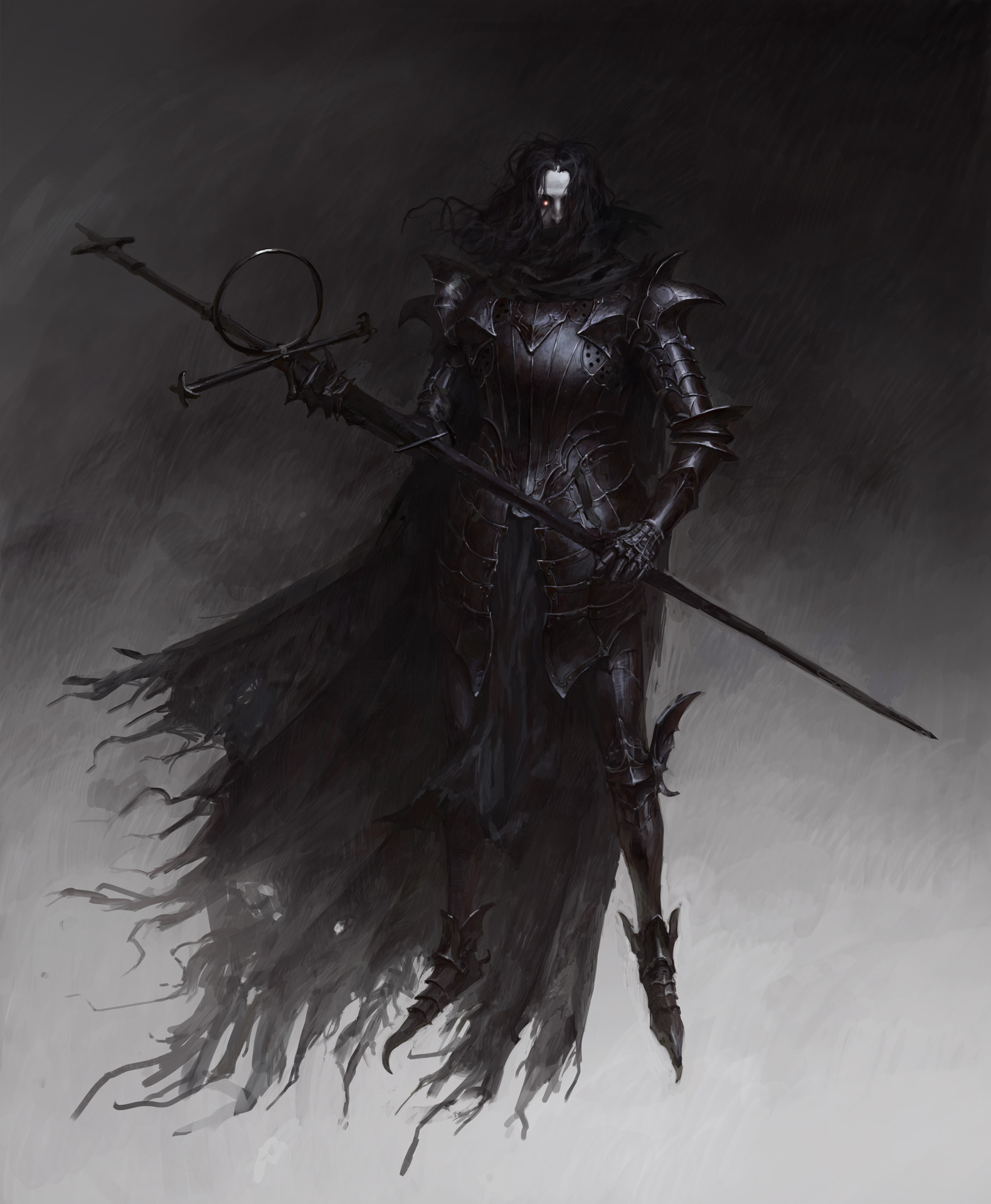

Path of Darkness
You opened your eyes and everything was dark. You learned to accustom yourself in the light, but your eyes still seek the furtiveness of the shadows.
Shadow Bringer
At 3rd level, when you enter your rage you can choose one of the following effects:
Dark Rage. Magical darkness spreads out from you in a 5-foot radius that lasts for the duration of your rage. You are able to see through this darkness. Other creatures with darkvision can't see through this darkness, and nonmagical light can't illuminate it.
Necrotic Rage. When you enter your rage, shadows batter enemy creatures around you, dealing necrotic damage equal to your proficiency bonus to each creature of your choice within 5 feet of you. As a bonus action on each of your turns for the duration, you can choose a single creature within 5 feet of you and deal the same damage.
Darkvision
At 3rd level, you have darkvision out to a range of 60 feet. In that radius, you can see in dim light as if it were bright light and in darkness as if it were dim light.
Heightened Gloom
At 6th level, you gain the following benefits for your rage:
Dark Rage. Magical light, as well as nonmagical light, can't illuminate the area of darkness that spreads from you, unless the area of light is created by a 9th level spell.
Necrotic Rage. Creatures that take this necrotic damage can't take any reactions until the start of their next turn.
Darksight
At 10th level, your eyes have become one with the dark. You have darkvision out to a range of 300 feet. In addition, magical darkness does not impede your darkvision, and you can see in dim light and darkness as if it were bright light. However, when you are in actual bright light, you have disadvantage on Perception checks.
Darkest Rage
At 14th level, you gain resistance to necrotic damage. While you are raging, you also have resistance to radiant damage, as the shadows around you dimish the light that seeks to harm you. Additionally, when you enter your rage, you can choose to gain the benefits of both your Dark Rage and your Necrotic Rage at the same time, or switch between them at the start of your turns.
Art Credits
Valeriy Vegera (Cover)
Anato Finnstark (pg. 1), Bodgan Rezunenko (pg. 2)
Shalizeh (pg. 3)
Dominik Mayer (pg. 4 and 8)
Forgeries by Olya Bossak (Reykat) (pg. 5)
Margrave by JuYoung Ha (pg. 6)
Death by Ben J (pg. 7)
Hastus by qissus (pg. 9)
Melusine Cultist by Anton Nazarenko (pg. 10)


Path of the Emissary
Barbarians that follow the path of the emissary have tasted the strength of the blade, but also know the strength of promises and threats. These barbarians recognize that for a prosperous community to keep growing and remain safe, it must have good and straightforward relations with its neighbors. Unlike other diplomats, however, these barbarians keep their words short and clear and immediately get to the point of what they have to say.
Primal Diplomacy
At 3rd level, you gain proficiency with the Persuasion and Intimidation skills, and you can choose either Persuasion or Intimidation. When you make an ability check with that skill, you can add double your proficiency bonus to the roll. If you are already proficient in any of these skills, you can choose to gain proficiency with another skill of your choice.
Words of Power
At 3rd level, when you are conversing with another creature, you can expend a use of your rage to amplify your words with its primal power. For 1 minute, you have advantage on Charisma checks, and you can use an action to make a promise, a threat or a request. Creatures of your choice that can hear you must succeed on a Charisma saving throw or become frightened or charmed by you (your choice) for 1 minute. The effect ends if you attack the creature, and a creature can only be affected once during your rage.
If combat breaks out during the duration of your rage, you immediately take the first place in the initiative order as your rage is already flowing in your veins, ready to be repurposed to violence. When you do so, you have the normal effects of your rage for the remainder of its duration.
The DC of the save equals 8 + double your proficiency bonus.
Charmed
The charmed condition is often confused with the charm person spell, which states that a target regards you as a friendly acquaintance in addition to being charmed.
On its own, the charmed condition is closer to the feelings of awe than friendship, and can be more accurately roleplayed as being awe-stricken.
Diplomatic Instincts
At 6th level, you know how to respond to threats. When combat breaks out as a result of a threat being delivered, you can reroll your iniative roll if you are lower on the initiative order than the creature that threatened you or that you threatened. You can take either result.
Additionally, when you hear a promise or a threat being made to you, you know if it is a lie. You can only detect outright lies in this way, not deception through omission or wordplay, and you can only use this ability on statements that promise or threaten specific actions. For example, you can use this ability with the statement "We will send a reinforcement of 20 soldiers to your village tomorrow", but not with the statement "We will help your village".
Decisive Declaration
At 10th level, once per long rest when you enter your rage, you can either make a threat or a promise to one of your allies. You gain the corresponding benefits for its duration.
Threat. Choose a creature within 60 feet of you that can hear you. The target has disadvantage on attack rolls against creatures other than you and you have disadvantage on attack rolls against creatures other than it. Additionally, you can make attacks of opportunity against the creature even if it takes the disengage action. The effects last for the duration of your rage. During that time, you can't move away from the creature you have threatened, and you must use your movement during your turn to approach it if you have a safe path to it. A path is not safe if an environmental danger blocks your way (i.e. lava), or you would necessarily provoke attacks of opportunity during your movement.
Promise. Choose up to 6 creatures within 60 feet of you that can hear you. Each creature gains temporary hit points equal to your level + your proficiency bonus. For the duration of your rage, you can touch a creature with 0 hit points and cause it to regain 1 hit point as a bonus action.
Turning Point
At 14th level, when you score a critical hit with an attack, you can force the target of your attack or another creature you can see within 30 feet of you to make a Wisdom saving throw. The DC is equal to 8 + double your proficiency bonus. On a failure, the creature is frightened or charmed by you (your choice) as you accompany your overwhelming strike with your words.
A frightened creature must take the Dash action and move away from you by the safest available route on each of its turns, unless there is nowhere to move. A charmed creature drops any weapons it is holding and ceases being hostile. The effects last for 1 minute or until the creature takes damage from you or your companions. Another creature can also end the effect by using its action to succeed on a Charisma check of its choice against the affected creature, changing its mind on a success and making it continue to fight. The DC of the check is equal to the DC of the saving throw.
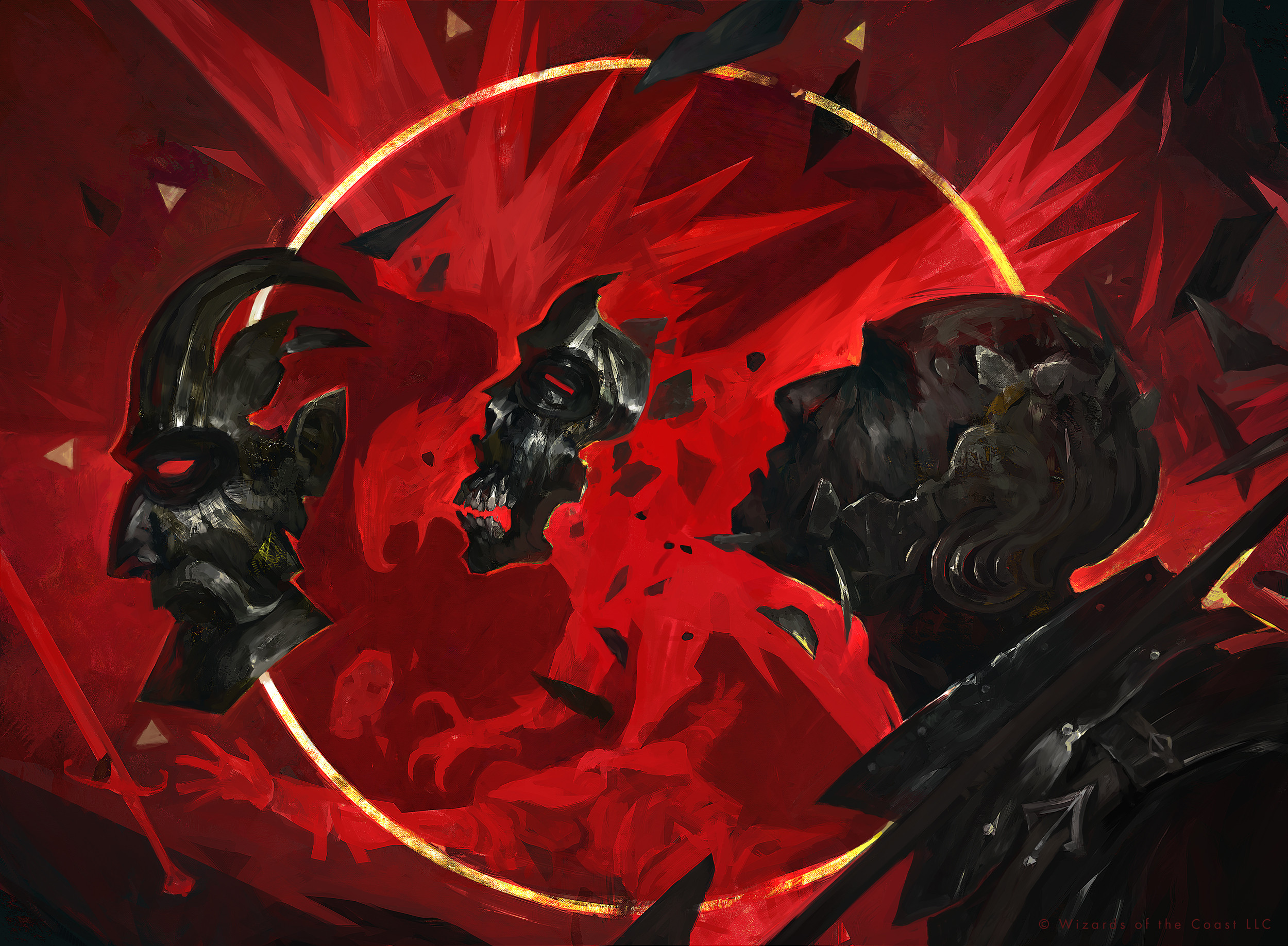

Path of Hate
You fight with absolute determination to end your enemy. Your rage boils over at a specific creature that challenges you, directed in its entirety towards one enemy that you vow to end. For you, it's always personal.
Hate-Fueled
At 3rd level, you can let your hate fuel your anger. When you roll for initiative, you can use your reaction to enter a hateful rage. As part of the same reaction, you can move up to half of your movement speed towards an enemy and make a melee attack against it if it is within your reach. That is your hated enemy. For the duration of your rage, you can't have disadvantage on attack rolls against your hated enemy. If you end your turn without having damaged your hated enemy, you take psychic damage equal to your proficiency bonus.
Targeted Hatred
At 6th level, when you hit your hated enemy with a weapon attack, you can choose to reroll your damage die once. You must use the new result. Additionally, when your hated enemy forces you to make a saving throw, you can gain a bonus to the roll equal to your proficiency bonus. You can use this feature a number of times equal to your profiency bonus. When you reach 14th level, you can use this ability an unlimited number of times.
Triumphant Pride
At 10th level, you gain temporary hit points equal to your level + your proficiency bonus whenever you kill your hated enemy. In addition, you have advantage on all attack rolls until the end of your next turn.
If combat ends without your hated enemy dead, you must make a Wisdom saving throw. The DC is equal to your level. On a failure, you gain a level of exhaustion.
Relentless Hate
At 14th level, when your hated enemy reduces you to 0 hit points and you use your Relentless Rage, you have advantage on the saving throw. If you succeed, you can make a weapon attack against your hated enemy as part of the same reaction if it is within your reach.
Path of Ravaging
You are at your worst at the heat of battle, and when your blood is alight and destruction has already been caused by your hand, there is nothing that can stop you.
Ravaging Rage
At 3rd level, when you use your bonus action to rage, you can make a single melee weapon attack as part of that same bonus action. For the duration of your rage, you can't have disadvantage on attack rolls against creatures that have less than half of their maximum hit points. Additionally, your Rage Damage bonus increases by 1 when you hit a creature that has less than half of its hit point maximum. That bonus increases to 2 when you reach 14th level.
Superiority Instincts
At 3rd level, you know if a creature has more or less maximum hit points than your just by looking at it.
Unstoppable
At 6th level, when you kill a creature during your turn, you can make an additional melee weapon attack with your bonus action if you are raging.
Impervious
At 10th level, when a creature that has less than half of its maximum hit points forces you to make a saving throw, you can use your reaction to make the saving throw with advantage.
Moment of Opportunity
At 14th level, a single moment of weakness can bring an enemy its downfall. When a creature that has less than half of its maximum hit points misses you with an attack, you can use your reaction to make a melee attack against it.
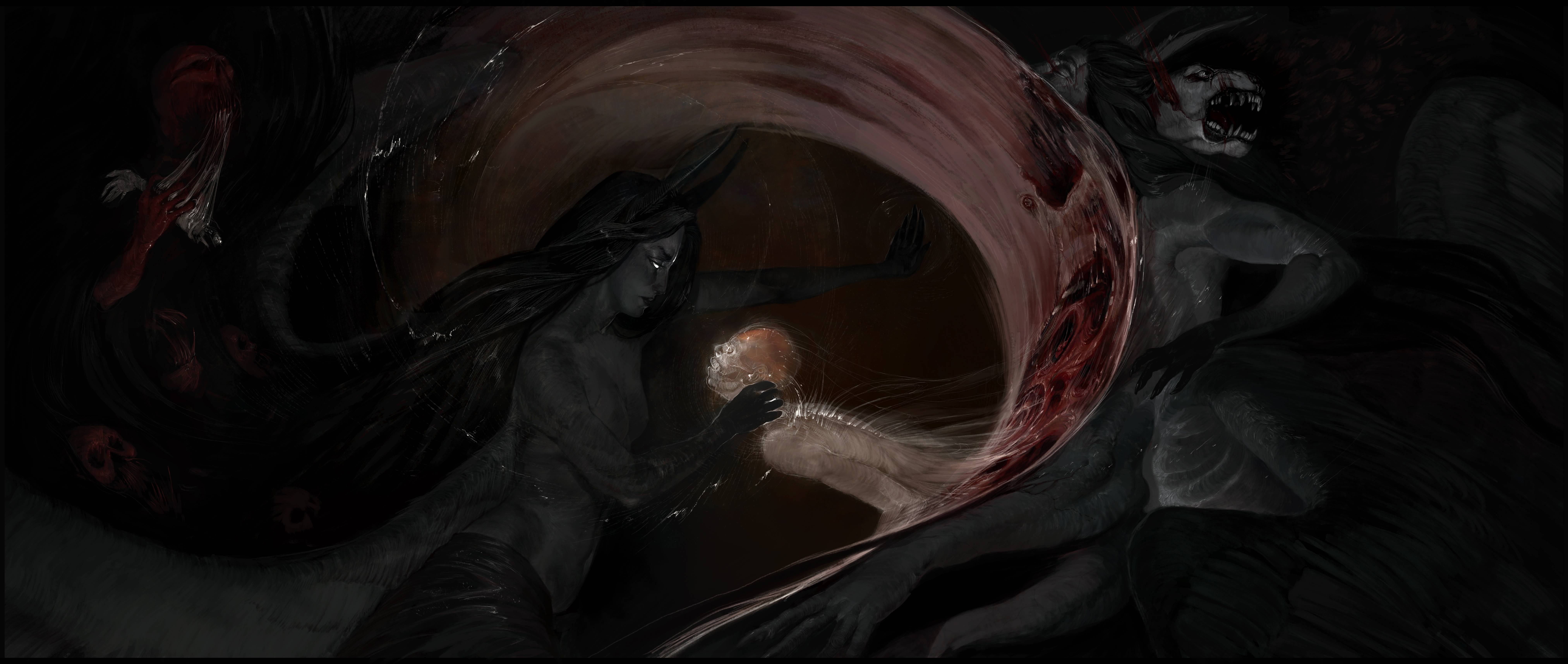

Path of Pain
For you, pain is your pool of power. You gather every pinprick of pain. Its memory later fills with you with might.
Pain Points
At 3rd level, you gain a pool of Pain points. When you take damage, you gain 1 Pain point. You gain an additional point of Pain for each 10 damage you take cumulatively. For example, you gain 1 pain point if you take 9 damage, 2 pain points if you take 14 damage, 3 pain points if you take 22 damage, etc. You calculate the points you gain from damage you take before factoring in any resistances you have. The maximum number of Pain points you can have is equal to twice your proficiency bonus.
Calculating Pain Points
When you take damage, you can easily determine how many Pain points you gain in the following way:
- If the number of the damage you took has only a single digit, you gain 1 Pain point.
- If the number of the damage you took has double digits, look at the first digit of the number. You gain that many Pain points plus 1. For example if you take 15 damage, the number's first digit is 1. That means you gain 2 Pain points.
You can use your Pain points in the following ways:
Might of Pain. When you hit with a melee weapon attack, you can spend a number of Pain points. You deal extra damage with your attack equal to your Rage damage for each Pain point you expend.
Resilience. When you take damage you can spend a number of Pain points. The damage you take is reduced by an amount equal to your Rage Damage for each pain point you use. This reduction is calculated after any resistances you have.
Determination
At 6th level, when you fail on a Strength, Dexterity or Constitution ability check, you can expend 1 Pain point to gain a bonus to the roll equal to your Rage Damage, potentially turning the roll to a success. If you still fail, you must expend an additional Pain points until you either succeed on the check or run out of Pain points.
Chainless
At 10th level, when you fail on a saving throw, you can expend 1 Pain point to gain a bonus to the roll equal to your Rage Damage, potentially turning the roll to a success. If you still fail, you must expend additional Pain points until you either succeed on the check or run out of Pain points. You can't use this ability with your Relentless Rage.
Painful Denial
At 14th level, when you use your Relentless Rage, you can expend 3 Pain points to resist the dying of the light. When you do so, you make the save with advantgae, and the DC of your Relentless Rage does not increase as a result.
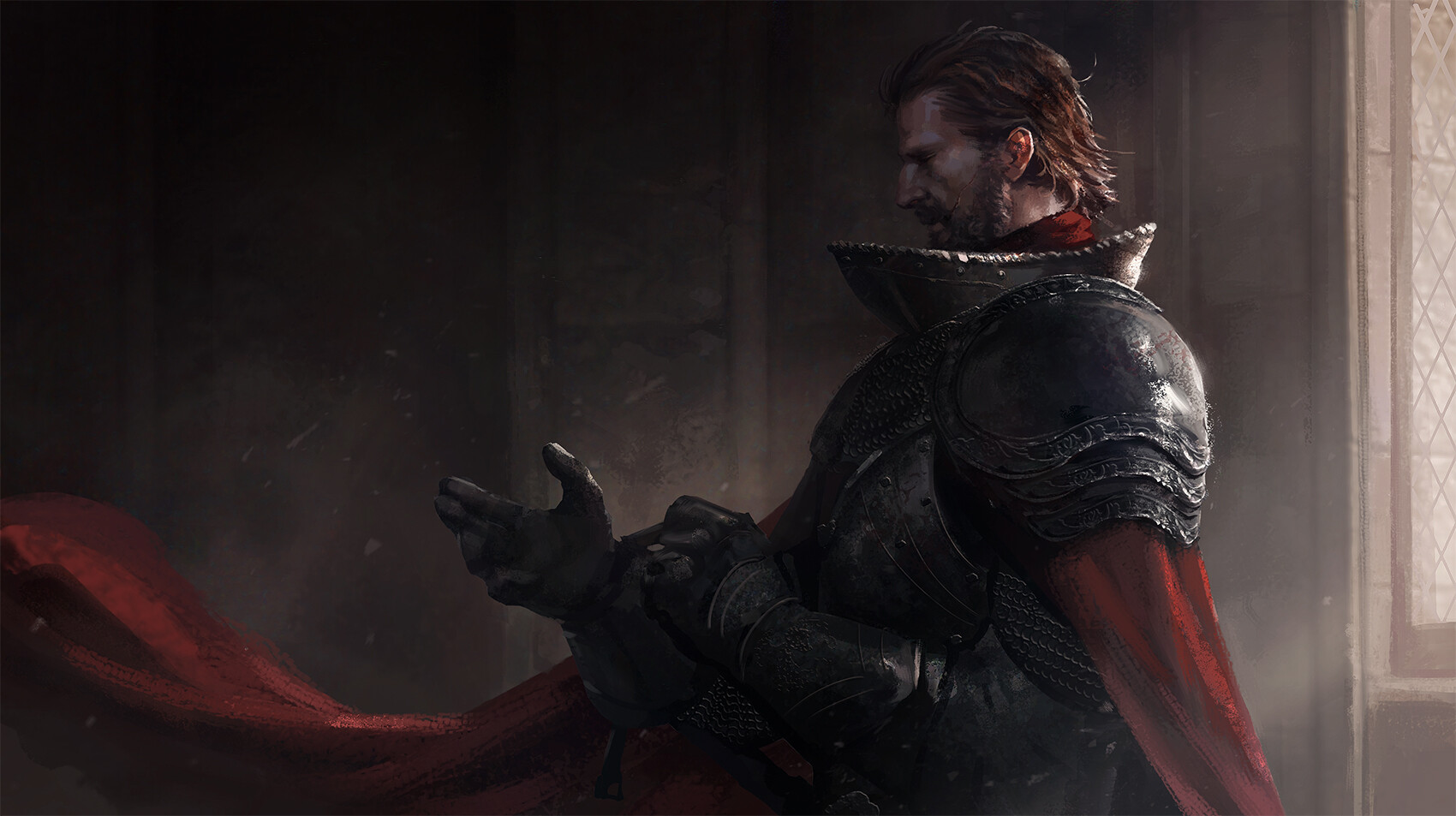

Path of the Battle Hymn
Your reverence towards battle is almost ceremonial. There is nothing you deem more sacred, and you dedicate great works of beauty in its name. Primarily, that of the Battle Hymn, which you sing in important moments. In the climax of true battle, which can forge the soul.
Battle Hymn
At 3rd level, when you enter your rage you can also choose to begin your battle hymn. When you miss with a melee weapon attack during your hymn, you can reroll the attack roll once during your turn. Your battle hymn is audible out to a range of 60 feet. When an allied creature that can hear your hymn hits with a weapon attack, it can add your Rage Damage to its damage roll. It can only do so once per turn, or twice per turn once you reach 14th level.
Hymn of Warriors
At 6th level, when you begin your hymn, you can call out to the soul of a great warrior of the past. A Warrior Spirit appears within 30 feet of you. It has the same statistics it would have if you had cast the summon warrior spirit spell at a level equal to your proficiency bonus, and behaves the same way as described in the spell. You can use this ability once per long rest. You are not considered to be casting a spell when you do so, and you do not need to concentrate on the spell.
Hymn of Glory
At 10th level, your battle hymn inspires you. Your attacks with melee weapons score a critical hit on a roll of 19-20 while you can hear your battle hymn. In addition, when you score a critical hit, you gain temporary hit points equal to double your proficiency bonus.
Indomitable Hymn
At 14th level, your battle hymn suffuses you and other warriors with even greater might. When you miss with a melee weapon attack or fail on a saving throw, you can choose to hit with the attack or succeed on the save instead. You can do so once per short or long rest.
In addition, your allies can add your Rage Damage bonus to their damage rolls twice per turn.
Path of Valor
Noble feelings fuel your fighting, as your rage is one of determination against injustice. The connection with your comrades keeps you in the fray for as long as necessary, and even against insurmountable odds, if you are to see them survive.
Fortifying Rage
At 3rd level, your rage emboldens your allies, giving them a second wind. When you enter your rage, you and up to 6 creatures of your choice within 60 feet of you gain temporary hit points equal to your level + double your proficiency bonus. During your rage, you can use your bonus action to grant another creature within 30 feet of you temporary hit points equal to your proficiency bonus.
Irate Prevention
At 6th level, when an allied creature within 30 feet of you is reduced to 0 hit points, you can use your reaction to scream out in protest. Your ally is reduced to 1 hit point instead and regains an additional number of hit points equal to your level. Additionally, all attack against its attacker are made with advantage until the end of your next turn. Once you've used this ability, you can't use it again until you complete a short or long rest.
Punishing Strike
At 10th level, when an enemy hits an allied creature with an attack, you can use your reaction to make a weapon attack against it. On a hit, the target has disadvantage on all attack rolls against creatures other than you until the end of its turn.
Fortified Strike
When you or an allied creature that has temporary hit points from your Fortifying Rage hits with a weapon attack, it can choose to expend a number of those temporary hit points equal to its profiency bonus in order to deal an equal amount of extra damage with its attack. A creature can only do so once per turn.
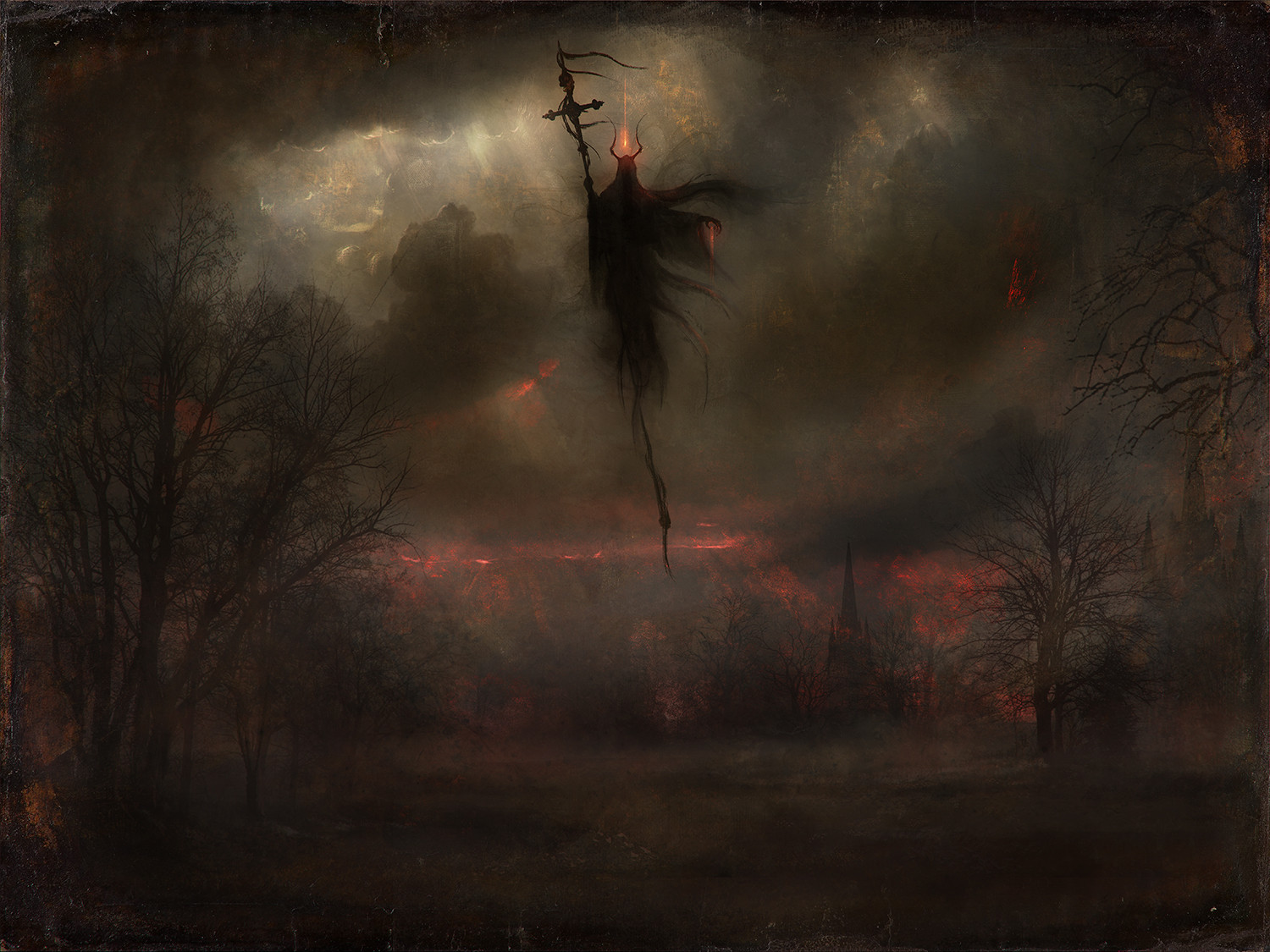

Path of the Reaper
You serve the great reaper, making your blade an extension of its scythe. Whether you willingly placed yourself under his service, or you compromised into a partnership, you now collect souls for the reaper.
Reaper's Scythe
At 3rd level, you can channel the powers of the reaper when you enter your rage. You gain resistance to necrotic damage for the duration, and the blade of any weapon you are holding elongates into the shape of a scythe, increasing your reach to 10 feet with any weapon attacks you make.
Reaper's Keepsakes
Also at 3rd level, each time you kill an enemy creature that has a CR higher than 0, your hit point maximum increases by 1. Record the extra hit points you gain from this feature. If you complete a long rest without having killed an enemy creature with a CR higher than 0, the hit points you gain from this feature reset to 0.
The hit points you gain from this feature can't ever exceed your normal number of maximum hit points. For example, if your normal hit point maximum is 50 hit points, you can only have up to another 50 hit points extra, and not 51.
Deathly Customs
At 6th level, you have become accustomed to death and the circle of life. You have advantage on death saving throws. Additionally, if you or another creature you can see within 30 feet of you succeeds on a death saving throw, you may allow it to regain consciousness with 1 hit point, as if it had rolled a 20 on the save. Once you've used this ability, you can't do so again until you complete a long rest.
Deadly Reaping
At 10th level, while you are raging your attacks score a critical hit on a roll of 19-20 if you are wielding your scythe-like weapon.
In addition, when you score a critical hit, you can choose to deal necrotic damage instead of the normal type of damage you deal. When you do so, you can regain a number of hit points equal to one of the damage dice you've rolled. You select which die after you see the results.
Reaping Strike
At 14th level, when you hit a creature with a melee weapon attack while you are raging, and you reduce it to less than half of its maximum hit points, you can force it to make a death saving throw. If the creature has legendary actions, or its CR is higher than your level, it is immune to this effect. On a failure, it dies. Once you've killed a creature using this ability, you can't use it again until you complete a long rest.
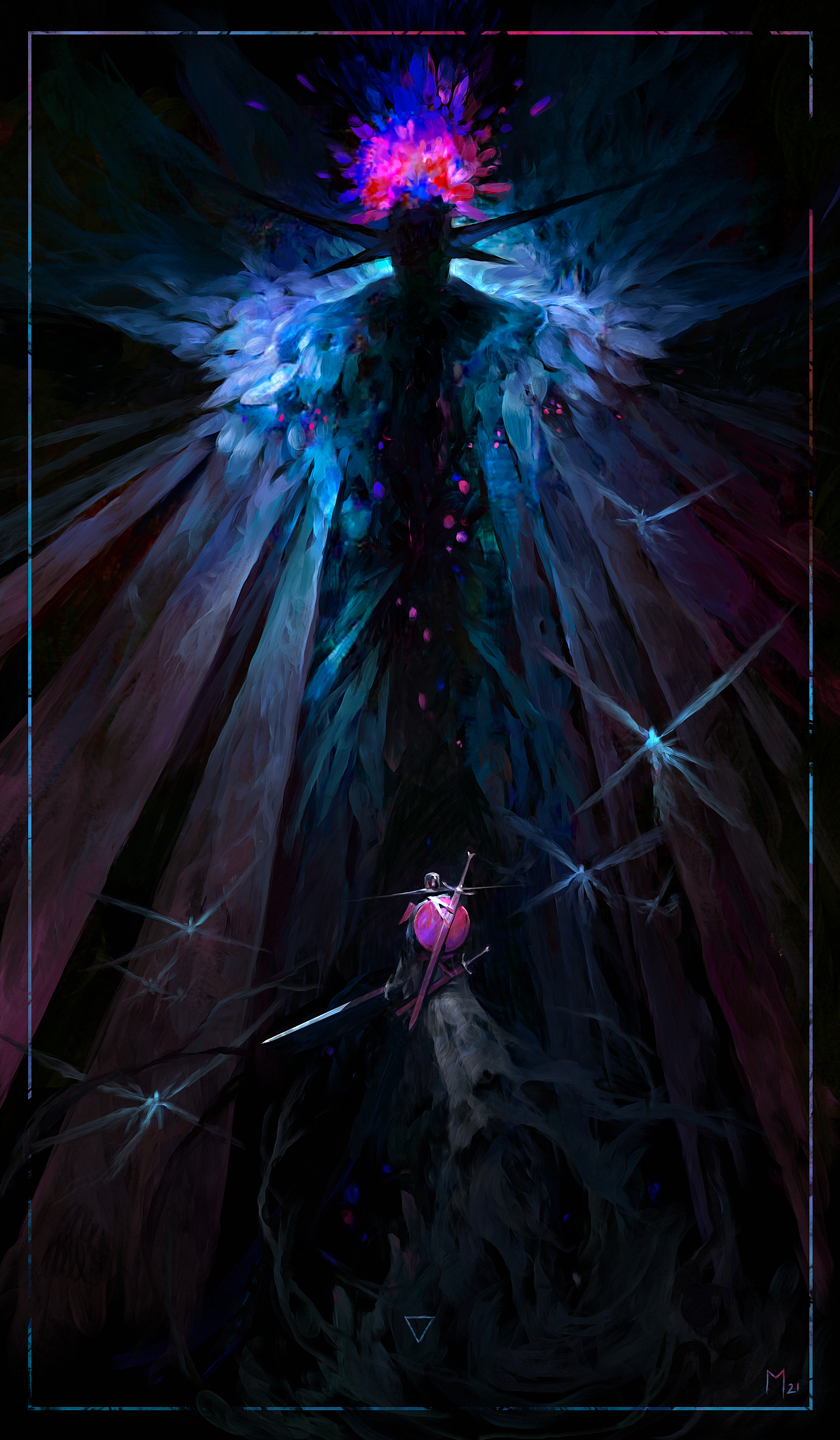

Path of Ending
You are a living weapon constructed, molded or recruited in the service of one of the most unknowable creatures in the universe which promises to bring the eternal end of all things.
Ender's Designation
At 3rd level, you can use your bonus action to designate a creature you can see within 60 feet of you and announce its doom. When the designated creature dies, you gain temporary hit points equal to your Constitution modifier. While a creature is designated, you can't designate another creature until the previous one dies or you complete a long rest.
Raging Doom
At 6th level, when you use your bonus action to enter your rage, you can designate a creature within range as part of that bonus action, even if you have another creature designated. The creature immediately takes necrotic damage equal to your level, which can't be reduced in any way. When you designate a creature in this way, you can select one of the following benefits which lasts as long as you are raging:
- Any damage you deal to the creature can't be reduced in any way.
- You score a critical hit on a roll of 19-20 on the d20 when you make a weapon attack against the designated creature.
- When a designated creature dies, any creatures of your choice within 30 feet of it that saw it die must succeed on a Wisdom saving throw (DC 8 + your proficiency bonus + your Strength modifier) or become frightened of you for 1 minute. An affected creature can repeat the saving throw at the end of each of its turns, ending the effect on itself on a success.
- When a designated creature moves away from you, it must spend 2 feet of movement for every foot it moves, as the universe itself prevents its escape.
Inescapable Demise
At 10th level, when you see an attack miss against a creature you have designated, you can use your reaction to allow it to hit instead. Once you've used this ability, you can't do so again until you complete a long rest.
Hand of Doom
You are resilient against the implements of your master. You gain resistance to necrotic damage, and your maximum hit points can't be reduced.
Additionally, when you have a creature designated, you are considered to always be raging in regards to it, even if you haven't entered your rage. For example, you add your rage damage bonus to damage rolls against it, but not against other creatures, and you take half physical damage from it, but not by other creatures.
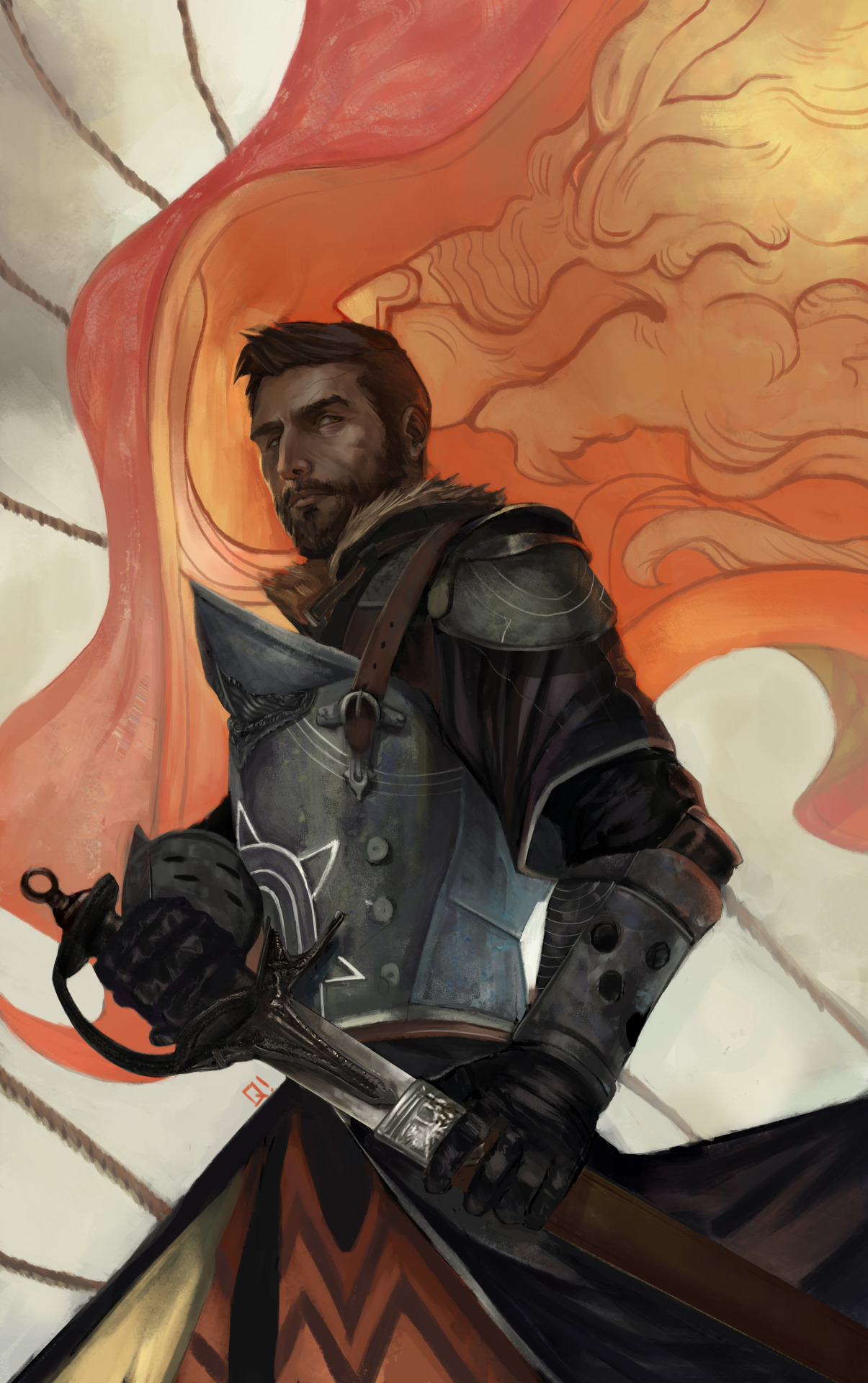

Path of Martial Advantage
These barbarians not only rely on their internal rage to set them apart as warriors, but also hone their martial arts through persistent training. Known for their ability to persevere in any environment and face any threat, their self-control sets them apart from other club-beating barbarians.
Controlled Self
At 3rd level, when you are raging, your rage cannot end as a result of you not having attacked a hostile creature since your last turn or taken damage since then.
Fighting Style
At 3rd level, you gain a fighting style. Choose between blind fighting, dueling, great weapon fighting, interception, thrown weapon fighting, two-weapon fighting, or unarmed fighting.
Martial Technique
At 3rd level, you learn one maneuver of your choice from among those available to the Fighter's Battle Master archetype. If a maneuver you use requires your target to make a saving throw to resist the maneuver's effects, the saving throw DC equals 8 + your proficiency bonus + your Strength or Dexterity modifier (your choice).
You gain two superiority dice, which are a d6 (these dice are added to any superiority dice you have from another source). These dice are used to fuel your maneuvers. A superiority die is expended when you use it. You regain your expended superiority dice when you finish a short or long rest.
Controlled Fury
At 6th level, when you use your reckless attack, you can exercise martial control and gain the benefits of the feature without its penalties. When you use your reckless attack, attack rolls against you don't have advantage until your next turn. You can use this feature a number of times equal to your proficiency bonus. You regain all expended uses when you complete a long rest.
Unabating Assault
At 10th level, when you score a critical hit, you can regain an expended superiority die. You can do so once per turn. Additionally, when you use your controlled fury ability, your attacks score a critical hit on a roll of 19-20.
Martial Mastery
At 14th level, when you hit a creature with a controlled fury attack, you can choose whether to reroll one of your damage dice (you can take either result), push the creature 5 feet away from you, or force the creature to make a Strength saving throw. On a failed save, the creature is knocked prone.
When you complete a long rest, you can switch the maneuver you know from your martial technique trait for another maneuver of your choice. In addition, when you use your controlled fury ability, your attacks score a critical hit on a roll of 18-20.


Path of Rhythm
You fight with time-kept determination and focus, bellowing a ferocious rhythm in the form of growls or stomping, coordinating a whole battle with your strikes.
Learned Rhythms
Starting at 3rd level, you gain proficiency with percussive musical instruments, and the Performance skill.
Driving Rage
Starting at 3rd level, you can use body percussion, shouting and growling to create a driving rhythm that enhances the fighting abilities of allies around you. While you are raging, any creatures of your choice within 30 feet of you have advantage on Strength and Dexterity saving throws, as well as Strength and Dexterity checks to initiate or escape a grapple, and any checks they make as part of the Shove action.
Rhythm Break
At 6th level, you can switch your rhythm, allowing an opportunity for the battle's rhythm to change as well. While you are raging, you can use a bonus action to select a creature that can hear you within 60 feet of you. If the creature is willing, it can reroll its initiative roll, and select whether to keep the new result, changing its place in the initiative order. If the creature is unwilling, it must succeed on a Charisma saving throw or it rerolls its initiative and you select whether it keeps its new result. The DC is equal to 8 + double your proficiency bonus.
After you've changed the initiative order of a creature, you can't use this ability again until you rage again. If you use this ability on a creature, but don't change its initiative order after seeing its roll, you can use this ability again but not on the same creature.
Percussive Ceremony
At 10th level, you can perform an invigorating percussive ritual along with your allies for at least 1 minute. At the end of your performance, you all gain 10 temporary hit points and one of the following benefits of your choice which lasts for 1 minute. You can use this ability once per short or long rest.
- You have advantage on initiative rolls.
- Your speed is increased by 10 feet.
- You have advantage on Athletics and Acrobatics checks.
- You have advantage on Intimidation checks.
Pressing Rhythm
At 14th level, when an ally reduces a creature to 0 hit points with a weapon attack, you can use your reaction to allow it to make another weapon attack with its bonus action.
Additionally, while you are raging, you can use your bonus action to select an allied creature and allow it to move up to half of its movement speed without provoking attacks of opportunity.